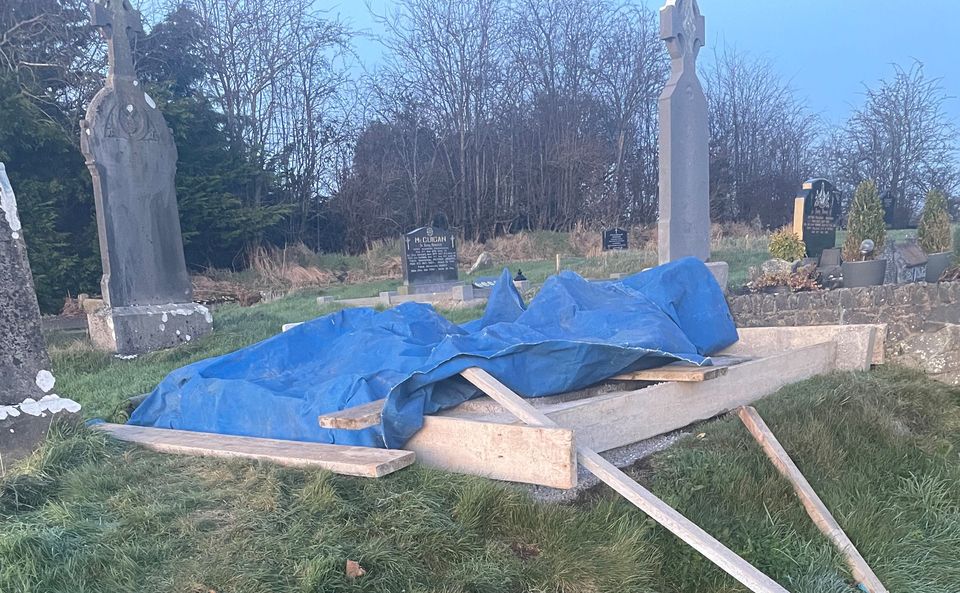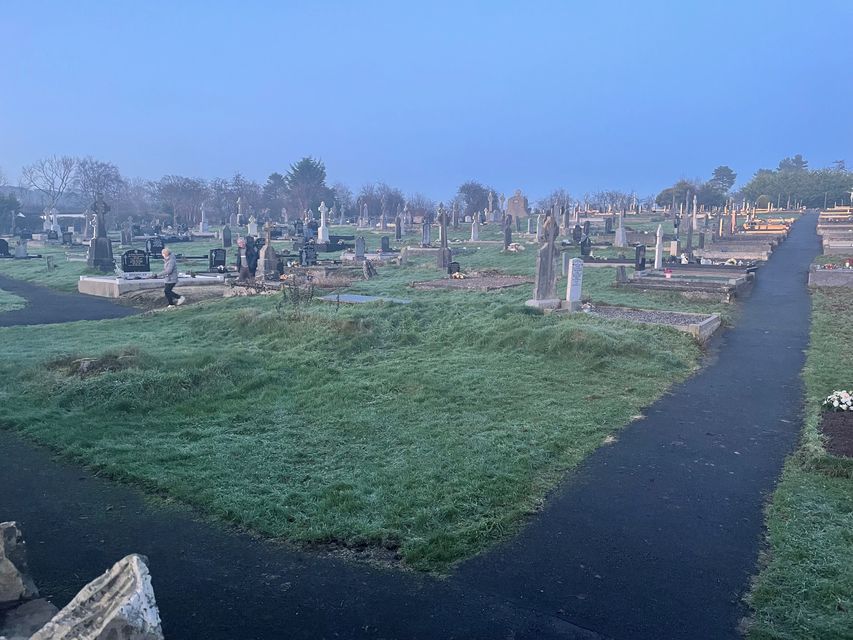Investigators searching for the remains of Disappeared victim Joe Lynskey said the exhumation of a grave in Co Monaghan had been a difficult time for his family.
The Independent Commission for the Location of Victims’ Remains (ICLVR) said a formal process would be undertaken to establish the identity of all the remains found in the grave in the village of Annyalla.
Mr Lynskey, a former monk from Belfast who later joined the IRA, was abducted, murdered and secretly buried by the IRA in 1972.
The ICLVR did not become aware that Joe Lynskey was one of the Disappeared until 2010 (WAVE Trauma Centre/PA)
He was one of 17 people who were Disappeared by republican paramilitaries during the Troubles in Northern Ireland.
The commission said it had received information related to “suspicious historic activity” during the 1970s at a grave in Annyalla cemetery.
The ICLVR did not become aware that Mr Lynskey was one of the Disappeared until 2010. A number of searches since then have failed to locate his remains.
Jon Hill, lead investigator for the ICVLR, said it was a difficult time for the Lynskey family.
Speaking on Wednesday, Mr Hill said: “The Lynskeys have been disappointed before when we’ve done a search and recovered remains.”
In 2010, the commission was searching for Mr Lynskey in Co Meath and uncovered remains which related to two other of the Disappeared: Seamus Wright and Kevin McKee.
Speaking to the PA news agency at Annyalla cemetery, Mr Hill added: “So they had that news, hoping or expecting that could have been Joe, and their hopes were dashed.
“They took comfort from the fact that someone had been recovered, and they still have that view.
The exhumation was carried out at Annyalla Cemetery in Co Monaghan (Jonathan McCambridge/PA)
“So they’re quite guarded in their views or their thoughts on what it is, that their hopes don’t raise too high until we get to a position where we’re sure it is Joe.”
His comments echoed those of Mr Lynskey’s niece Maria, who told BBC Radio Ulster that she was “hoping” not to be disappointed again.
She said she was both nervous and optimistic about the exhumation, and added: “These are long journeys for us, for all the families of the Disappeared that have had to go through this.”
Mr Hill said the commission had had information for “a period of time” relating to what appeared to be “suspicious activity” that took place within the graveyard several years ago.
Mr Lynskey’s niece Maria Lynskey said she was ‘hoping’ not to be disappointed again (Brian Lawless/PA)
The investigator said: “Recent years have suggested that that could have been indicative of what happened to Joe Lynskey.
“Because of that, we’ve taken steps together with An Garda Siochana to go through the due process of arranging for an exhumation.”
Mr Hill said there were multiple sets of remains in what was a family grave.
The sets of remains would be submitted for DNA examination. If Mr Lynskey’s remains were identified, there would be a post-mortem examination and a process involving the coroner and State pathologist.
He said the commission had been in contact with the family associated with the plot.
“To be suggesting there could be a burial within their family plot that doesn’t relate to their family is something that they want resolved as well,” he said.
“That is information that was within that family group over a number of years. So I think it brings some relief to them as well.”
The investigator acknowledged the exhumation was an unusual search process for the commission.
The ICLVR said a formal process would be undertaken to establish the identity of all the remains found in the grave (Jonathan McCambridge/PA)
“Ordinarily, our searches are in fields or bog land, where we’ll be looking for one set of remains in a field, and that’s all we’ll find,” he said.
“Of course, in a churchyard, it’s significantly different from that, and that brings about its own dynamics and creates its own problems.
“There are of course remains here, numerous remains. And yes, it’s unusual, but it isn’t unusual for the commission to have information relating to something happening during a burial which was unusual.
“We’ve had a number of cases like that reported to us over the years, and we’ve been able to investigate all of those and eliminate them all, apart from this one.
“So this one has become particularly relevant as the years have gone by, and more recent information has brought us to the conclusion that we’re at now, that it needed to be exhumed to eliminate that possibility that it could be Joe Lynskey.”
The commission was set up by the UK and Irish governments during the peace process to investigate the whereabouts of the Disappeared. Thirteen have been formally found.
As well as Mr Lynskey, the commission is also tasked with finding three other Disappeared victims – Co Tyrone teenager Columba McVeigh, British Army Captain Robert Nairac, and Seamus Maguire, who was in his mid-20s and from near Lurgan, Co Armagh.
Mr Hill said all the remaining cases would remain open until the victims were either found or there was “no more that we can do”.
“We would appeal always to anyone who has any information to come forward, because the information is absolutely crucial to our work,” he said.



